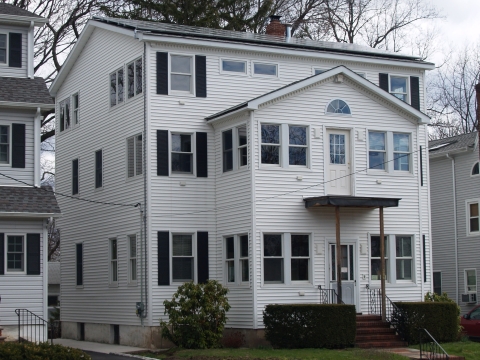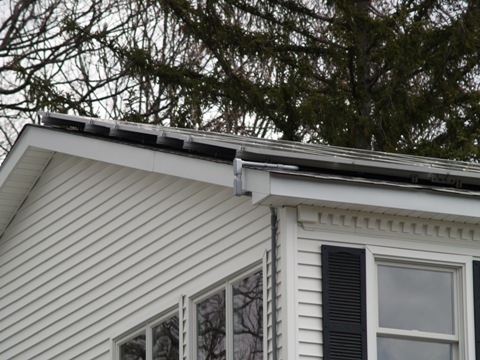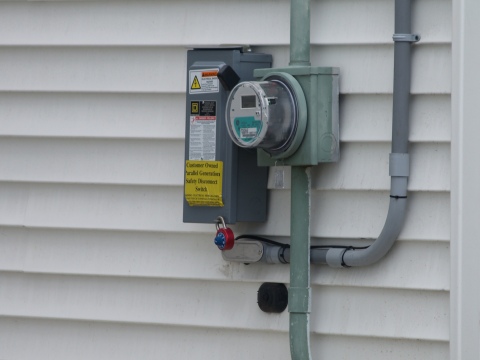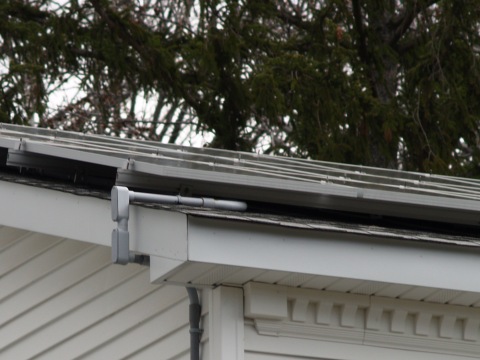
Goin' Green

Lt. Chris Freeman from Passaic (NJ) Fire Department sent in these photos of something we will all probably start to see a bit more, roof mounted solar panels. As you can see in the photo above, the entire surface of the roof is covered with these panels. This could cause a few issues for us when operating in and around these structures. So since we knew nothing about solar power, we did some research. We are not experts in solar energy, but we found some information that is definitely worth sharing.

The solar panels are actually called PhotoVoltaic Modules (PV Modules) they are pieces of crystalline silicon framed with aluminum and covered in tempered glass. Some PV Modules may produce anywhere from 12 to 24 volts and up to 300 watts each. Typically modules are tied together to produce the amount of power needed to power a typical home or business, this could be well over 5000 watts. Modules will most likely be found on the southern exposure of a roof and could potentially cover the entire exposure of the roof as shown here.
Structures with solar power can be either be stand alone (off-grid systems) or tied into the area’s electrical system (grid-tied systems.) Some of the grid-tied systems can actually produce enough power that they cause the electrical meter to turn backward and feed power back into the system. This actually allows the homeowner to receive a credit for the power they “give back” to the system. Properly installed grid-tied systems will have a automatic disconnect switch that prevents the modules from feeding energy into the grid if the grid power goes out. This prevents the solar energy from causing a hazardous situation if there is an issue like power lines on the ground.

By design solar panels produce DC power and must be converted to AC power to be of any benefit to the homeowner. This is done by an inverter that is normally mounted somewhere inside the structure. The disconnect shown here is a DC disconnect and will only disconnect the power going into the structure. Regardless of the position of this switch, the panels are still producing power. Anytime the panels are exposed to light, they are always hot.

So what does this all mean for us? Well here are a few things to remember: As mentioned earlier, the panels are always hot, regardless of the position of the disconnect switch. The wire coming down the side of the structure has a tremendous amount of DC power and will always be hot regardless of the position of the disconnect switch. The panels are covered with tempered glass and would be very slippery if walked on. Since the panels are always hot, cutting through them might not be an option. The amount of panels shown of this particular structure and the way they are mounted may limit the opportunity for a vertical vent. Depending on conditions venting the back side of the roof (not covered with panels,) or a gable vent technique may be a better option.
Like we said, we are not experts in solar energy. Hopefully some of our readers can share some additional information on this new hazard to the fire service. It’s something we will probably start to see more of and we should make sure we know whatever we need to in order to operate in structures with this potential hazard.